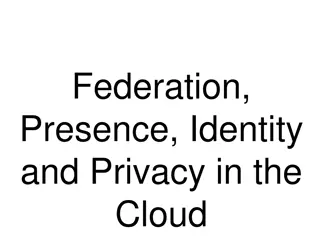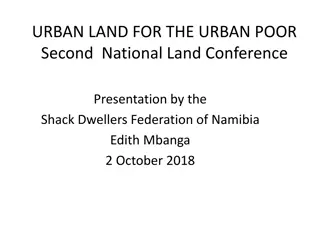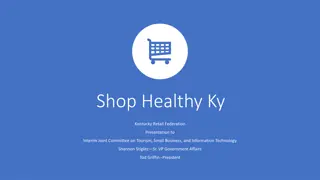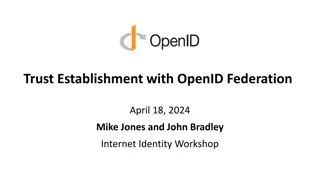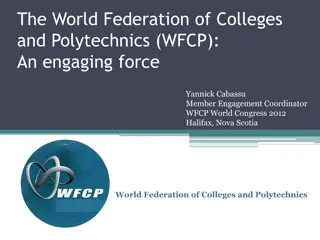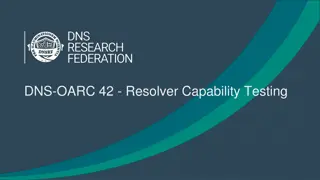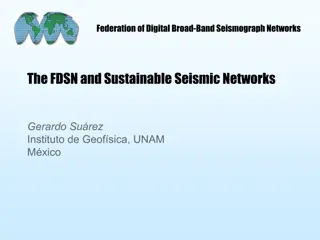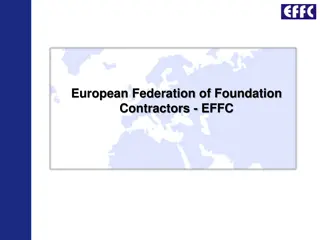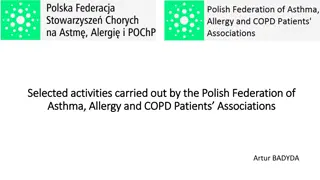
Edge-WBI Federation Interface Management by GSMA OPG
"Learn about the specifications and requirements of the Edge-WBI Interface for Federation management as defined by GSMA OPG. Explore the functionalities including secure transport, resource synchronization, application management, edge node sharing, and more. Discover the separation of concerns between operators and application providers within the network ecosystem."
Download Presentation

Please find below an Image/Link to download the presentation.
The content on the website is provided AS IS for your information and personal use only. It may not be sold, licensed, or shared on other websites without obtaining consent from the author. If you encounter any issues during the download, it is possible that the publisher has removed the file from their server.
You are allowed to download the files provided on this website for personal or commercial use, subject to the condition that they are used lawfully. All files are the property of their respective owners.
The content on the website is provided AS IS for your information and personal use only. It may not be sold, licensed, or shared on other websites without obtaining consent from the author.
E N D
Presentation Transcript
3GPP EWBI Interface for Federation Samar Shailendra (Intel)
E/WBI GSMA OP (1/3) In its PRD v3, GSMA OPG defines the EWBI functionalities for federation as: Federation Interconnect Management (Sec 3.3.1): secure transport, plus capabilities such as integrity protection for the E/WBI messaging between OP instances. Resource Catalogue Synchronisation and Discovery (Sec 3.3.2): Type of resource, maintenance etc. Application and Resources Management (Sec 3.3.4): the Application Provider criteria provided to the Leading OP are transferred via the E/WBI to the Partner OP and used to deploy the application. Service Availability (Sec 3.3.4): the E/WBI shall allow the Home OP to provide the Visited OP with the necessary information to perform authorisation and grant the service access (e.g. a token). Edge Node Sharing (Sec 3.3.5): The connectivity between two OPs is over the E/WBI interface. 2
E/WBI GSMA OP (2/3) GSMA PRD v3, also describes the list of services for E/WBI interface (Sec 3.5.4) East/West Bound Interface Management Service Availability Zone Information Synchronisation Service Application and Resources Management Edge Node Sharing Service Application Deployment Management Service Events and Notifications Service Service Availability in Visited Network Management Service 3
E/WBI GSMA OP (3/3) GSMA PRD v3, also describes Requirements for E/WBI interface (Sec 5.1.2) The E/WBI is universal, meaning that all Operators and Operator Platforms provide Edge Cloud to each other through the same E/WBI. Security Requirements Application Management Sharing Usage statistics for the service requested by federated connection (Sec 5.2.3.2) 4
GSMA OP Separation of Concern GSMA OPG PRD describes Separation of Concern of OP and Application Providers (Sec 2.1.2) the Application Providers and OP do not require knowledge of each other's internal workings and implementation details the OP does not expose its internal topology and configuration etc. the OP does not know how the application works (for instance, it does not know about the application's identifiers and credentials) Between Two OPs (Sec 2.1.4) "separation of concerns" of the operators between each other and between OPs. Where the Operator Platform is not part of the operator's security domain, there is also a "separation of concerns" of the operators from the OP. "Separation of concerns" again means that they do not require knowledge of each other's internal workings and implementation details. For instance, the operators do not expose their internal topology and configuration, Cloudlets' (exact) physical locations, internal IP addressing, and real-time knowledge about detailed resource availability from one operator to other. 5
Interconnect between ECS-ERs ECS-Edge Repository (ECS-ER) is a specialized/elevated ECS with added functionalities for roaming and federation a. Receiving and storing information about edge computing resources from other ECS(s) of the ECSP; b. Receiving and storing information about edge computing resources from other ECS-ER(s) of the federation; c. Providing information about Edge computing resources to other ECS-ER(s) of the federation. ECS-ER maps to Federation Manager Role as defined by GSMA OPG MEC Federator as defined by ETSI ISG MEC 6
Architecture option for Edge Node Sharing Edge UE Option#10 in TR 23.700-98 Application Server(s) Application Client(s) Provides interface between ECS-ERs for Edge Node Sharing (E/WBI functionalities) EDGE-3 EDGE-5 EDGE-1 Edge Enabler Server(s) Edge Enabler Server(s) EDGE-9 EDGE-18 is used for sharing of shared node information (EAS information and associated EES information) among the two OPs EDGE-6 EDGE-6 EDGE-4 Edge Enabler Client Edge Configuration Server Edge Configuration Server EDGE-10 EDGE-10 ECS-Edge Repository ECS-Edge Repository EDGE-18 Operator platform B Operator platform A 7
IE/WBI interface between two OPs Edge Data Network UE 3GPP Core Network EDGE-18 is required between two ECS-ER or ECS-ER and MEC Federator (MEF) belonging to two OPs Based upon the previous discussion, EDGE-18 Edge Application Client(s) Application Data Traffic Application Server(s) EDGE-7 EDGE-3 EDGE-5 EDGE-1 Edge Enabler Server(s) EDGE-9 EDGE-2 Edge Enabler Client EDGE-6 Should not expose any internal details about OP EDGE-4 MEF Edge Configuration Server EDGE-8 EDGE-10 Should have clear separation from other interfaces within OP. EDGE-18 Edge Configuration Server (Edge Repository) EDGE-8 ECS-ER Should be aligned with interface provided by ETSI MEC (Mff). Need to provide security and management capabilities (in the scope of SA3 and SA5 respectively.) OP-A OP-B 8
Conclusion EDGE-18 aligns with GSMA E/WBI requirements and mandate of Separation of Concern EDGE-18 can be used to provide list of services as defined by GSMA. EDGE-18 can align with/reuse Mff as defined by ETSI ISG MEC. 9



